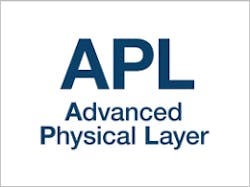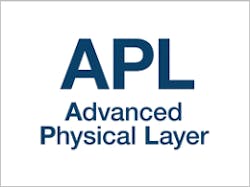Learn About the Latest Advanced Physical Layer Innovations
The physical layer has long been where the rubber met the road in automation and information technology (IT) systems. More recently, the new Ethernet physical layer, together with the automation protocols that define the structure and meaning of information being transmitted to and from field devices, are the enabling factors of the Industrial Internet of Things (IIoT).
To help optimize physical layer performance, major organizations within the industrial control industry are now working together on an Ethernet-to-the-field project that uses a two-wire, powered, intrinsically safe (IS) physical layer for IP-enabled instruments and infrastructure.
The Advanced Physical Layer (APL) development brings Ethernet into the field of process control and instrumentation. It incorporates important lessons learned in cooperation with all stakeholders in the process automation lifecycle. The solution is based on the same two-wire cable as FOUNDATION fieldbus H1, thus offering continuity for users.
Read the full article.
About the Author
FieldComm Group
FieldComm Group

Leaders relevant to this article:


